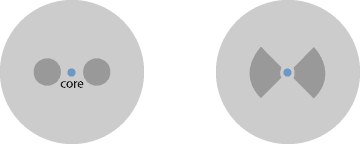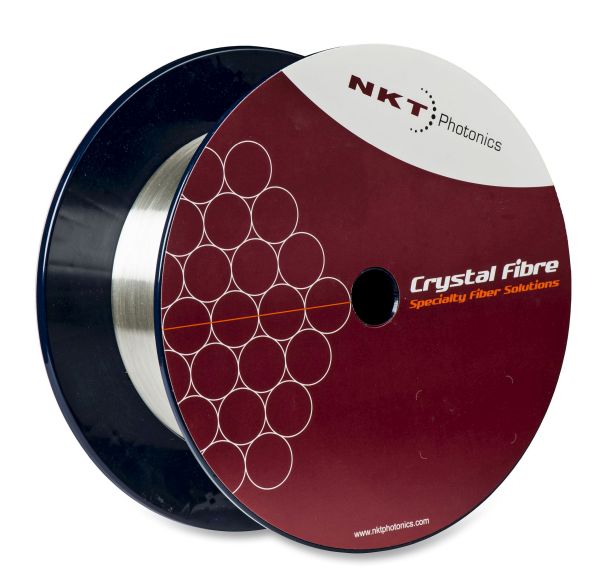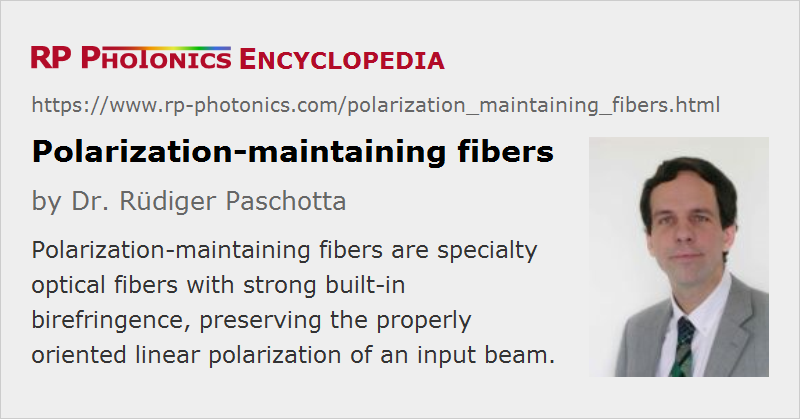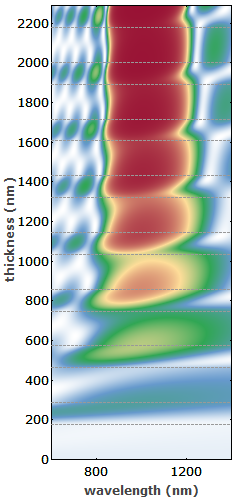Polarization-maintaining Fibers
Acronym: PM fiber
Definition: specialty optical fibers with strong built-in birefringence, preserving the properly oriented linear polarization of an input beam
More general term: optical fibers
German: polarisationserhaltende Fasern
Category: fiber optics and waveguides
How to cite the article; suggest additional literature
Author: Dr. Rüdiger Paschotta
Optical fibers always exhibit some degree of birefringence, even if they have a circularly symmetric design, because in practice there is always some amount of mechanical stress or other effect which breaks the symmetry. As a consequence, the polarization of light propagating in the fiber gradually changes in an uncontrolled (and wavelength-dependent) way, which also depends on any bending of the fiber and on its temperature.
Principle of Polarization-maintaining Fibers
The mentioned problem can be fixed by using a polarization-maintaining fiber, which is not a fiber without birefringence, but on the contrary a specialty fiber with a strong built-in birefringence (high-birefringence fiber or HIBI fiber, PM fiber). Provided that the polarization of light launched into the fiber is aligned with one of the birefringent axes, this polarization state will be preserved even if the fiber is bent. The physical principle behind this can be understood in terms of coherent mode coupling. The propagation constants of the two polarization modes are different due to the strong birefringence, so that the relative phase of such copropagating modes rapidly drifts away. Therefore, any disturbance along the fiber can effectively couple both modes only if it has a significant spatial Fourier component with a wavenumber which matches the difference of the propagation constants of the two polarization modes. If this difference is large enough, the usual disturbances in the fiber are too slowly varying to do effective mode coupling.
Ways of Realizing Polarization-maintaining Fibers
A commonly used method for introducing strong birefringence is to include two (not necessarily cylindrical) stress rods of a modified glass composition (with a different degree of thermal expansion) in the preform on opposite sides of the core (Figure 1). When a fiber is drawn from such a preform, the stress elements cause some mechanical stress with a well-defined orientation. Another variant of that approach is to have an elliptical cladding of different glass around the core.

Another technique is to use an elliptical core causing so-called form birefringence [1]. Here, the elliptical form itself, even without any mechanical stress, produces some level of form birefringence.
In a photonic crystal fiber (PCF), very strong birefringence can be obtained with an asymmetric arrangement of air holes, but stress elements (which may be index-matched) can also be used [6]. In any case, the birefringent beat length can be so small (a few millimeters or even less) that additional stress effects can cause only a low level of mixing of the polarization states. The index contrast can be several times 10−3, whereas in all-glass PM fibers it is typically only a few times 10−4.
Applications
Polarization-maintaining fibers are applied in devices where the polarization state cannot be allowed to drift, e.g. as a result of temperature changes. Examples are fiber interferometers and certain fiber lasers. A disadvantage of using such fibers is that usually an exact alignment of the polarization direction is required, which makes production more cumbersome. Also, propagation losses are higher than for standard fiber, and not all kinds of fibers are easily obtained in polarization-preserving form.
The polarization extinction ratio of light coming out of a polarization-maintaining fiber may be lower than that at the fiber input. This can occur as a result of imperfect alignment of the polarization direction at the input, but also be due to some residual degree of mode mixing. The latter effect can be strongly increased by mechanical stress (e.g. in a fiber connector). For applications requiring a very high polarization extinction ratio (e.g. in interferometry), it can be necessary to use an additional high-quality polarizer after the fiber.
Polarization-maintaining fibers should not be confused with single-polarization fibers, which can guide only light with a certain linear polarization.
Suppliers
The RP Photonics Buyer's Guide contains 28 suppliers for polarization-maintaining fibers. Among them:


NKT Photonics
NKT Photonics offers several types of broadband (UV–nIR) single-mode polarization-maintaining fibers with large mode area. They are also available with collimators and alignment mechanics as complete fiber delivery solutions.

TOPTICA Photonics
TOPTICA Photonics AG offers a wide range of optical fibers ideally suited for use with TOPTICAs lasers and FiberDock. These economically priced fibers cover a wide range of wavelengths. TOPTICA recommends to always purchase a fiber along with a laser and fiber coupler, as this ensures maximum fiber coupling efficiency. Also specialty fibers for power monitoring, beam splitting or combining are available with various ratios and also polarization maintaining.

Schäfter + Kirchhoff
We offer polarization-maintaining fiber cables with different cut-off wavelengths and measured values for the effective fiber NA. The polarization analyzers series SK010PA are universal measurement and test systems for coupling laser beam sources into polarization-maintaining fiber cables.
Questions and Comments from Users
Here you can submit questions and comments. As far as they get accepted by the author, they will appear above this paragraph together with the author’s answer. The author will decide on acceptance based on certain criteria. Essentially, the issue must be of sufficiently broad interest.
Please do not enter personal data here; we would otherwise delete it soon. (See also our privacy declaration.) If you wish to receive personal feedback or consultancy from the author, please contact him e.g. via e-mail.
By submitting the information, you give your consent to the potential publication of your inputs on our website according to our rules. (If you later retract your consent, we will delete those inputs.) As your inputs are first reviewed by the author, they may be published with some delay.
Bibliography
| [1] | K. Sano and Y. Fuji, “Polarization transmission characteristics of optical fibers with elliptical cross section”, Electron. Commun. Jpn. 63, 87 (1980), doi:10.1002/ecja.4400630812 |
| [2] | A. Kumar et al., “Birefringence calculations in elliptical-core optical fibers”, Electron. Lett. 20, 112 (1984), doi:10.1049/el:19840076 |
| [3] | J. Noda et al., “Polarization-maintaining fibers and their applications”, J. Lightwave Technol. 4 (8), 1071 (1986), doi:10.1109/JLT.1986.1074847 |
| [4] | D. Mogilevtsev et al., “Design of polarization-preserving photonic crystal fibres with elliptical pores”, J. Opt. A: Pure Appl. Opt. 3, S141 (2001), doi:10.1088/1464-4258/3/6/364 |
| [5] | J. R. Folkenberg et al., “Polarization maintaining large mode area photonic crystal fiber”, Opt. Express 12 (5), 956 (2004), doi:10.1364/OPEX.12.000956 |
| [6] | T. Schreiber et al., “Stress-induced single-polarization single-transverse mode photonic crystal fiber with low nonlinearity”, Opt. Express 13 (19), 7621 (2005), doi:10.1364/OPEX.13.007621 |
See also: fibers, single-polarization fibers, single-mode fibers, photonic crystal fibers, birefringence, polarization of light, specialty fibers, mode coupling, fiber polarization controllers, The Photonics Spotlight 2007-05-19
and other articles in the category fiber optics and waveguides

This encyclopedia is authored by Dr. Rüdiger Paschotta, the founder and executive of RP Photonics Consulting GmbH. How about a tailored training course from this distinguished expert at your location? Contact RP Photonics to find out how his technical consulting services (e.g. product designs, problem solving, independent evaluations, training) and software could become very valuable for your business!
 |






If you like this page, please share the link with your friends and colleagues, e.g. via social media:
These sharing buttons are implemented in a privacy-friendly way!